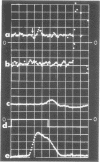Abstract
The experiments reported in this paper tested the hypothesis that the afferent potential elicited by a tendon tap in an isometrically recorded phasic stretch reflex can be detected in the surface EMG of normal humans when appropriate techniques are used. These techniques involved (1) training the subjects to relax mentally and physically so that the EMG was silent before and immediately after the diphasic MAP which reflects a highly synchronous discharge of afferent impulses from low threshold muscle stretch receptors after a tendon tap, and (2) using a data retrieval computer to summate stimulus-locked potentials in the EMG over a series of 16 samples using taps of uniform peak force and duration on the Achilles tendon to elicit the tendon jerk in the calf muscles. A discrete, diphasic potential (`A-wave') was recorded from EMG electrodes placed on the surface of the skin over the medial gastrocnemius muscle. The `A-wave' afferent potential had the opposite polarity to the corresponding efferent MAP. Under control conditions of relaxation the `A-wave' had a latency after the onset of the tap of 2 msec, the peak to peak amplitude was of the order of 5 μV and the duration was in the range of 6 to 10 msec. Further experiments were conducted to show that the `A-wave' (1) was not an artefact of the instrumentation used, (2) had a threshold at low intensities of stimulation, and (3) could be reliably augmented by using a Jendrassik manoeuvre compared with the potential observed during control (relaxation) conditions. The results support the conclusion that the `A-wave' emanates from the pool of muscle spindles which discharges impulses along group Ia nerve fibres in response to the phasic stretch stimulus because the primary ending of the spindles is known to initiate the stretch reflex and the spindles can be sensitized by fusimotor impulses so that their threshold is lowered as a result of a Jendrassik manoeuvre. The finding has important implications for the investigation of the fusimotor system in intact man.
Full text
PDF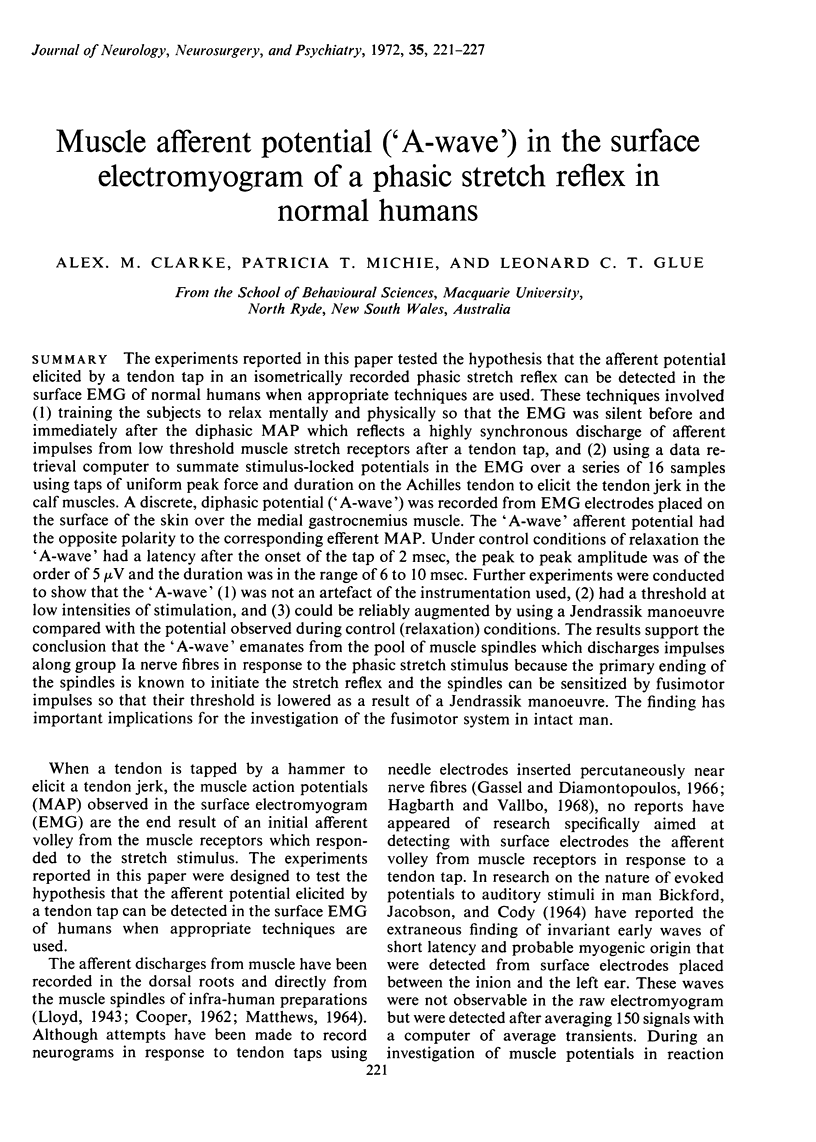
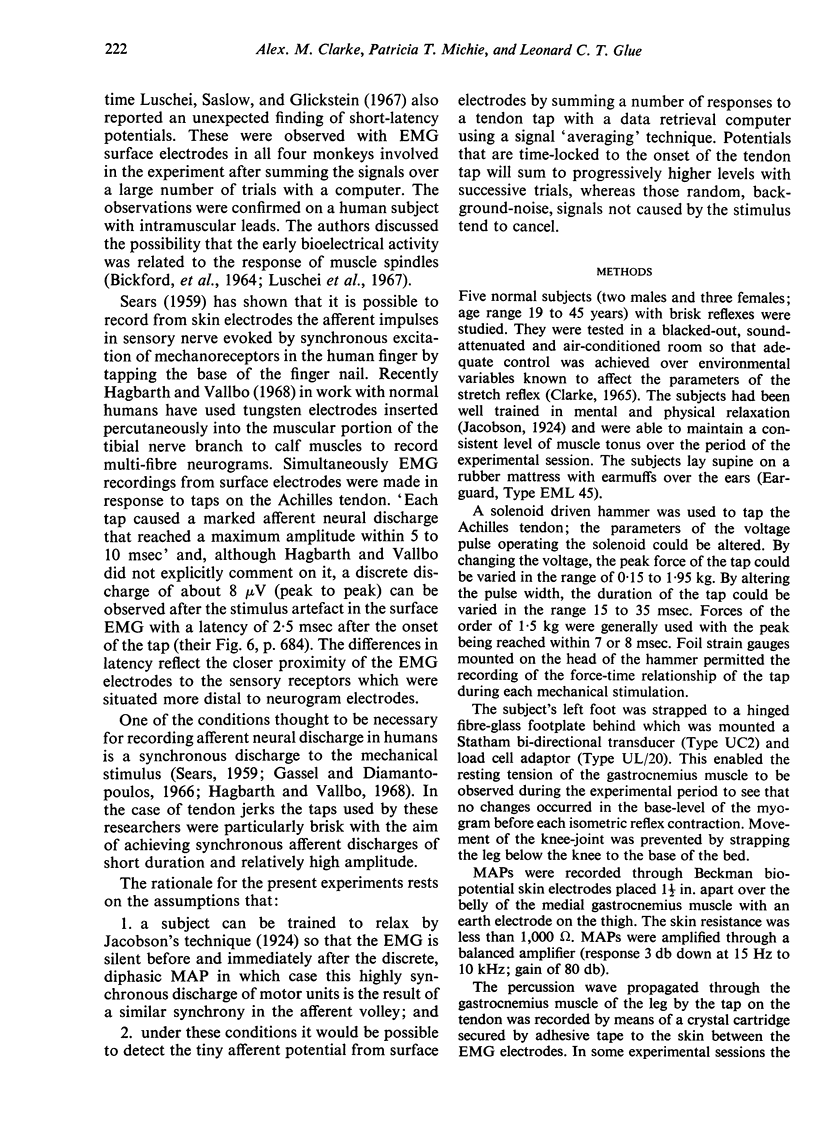
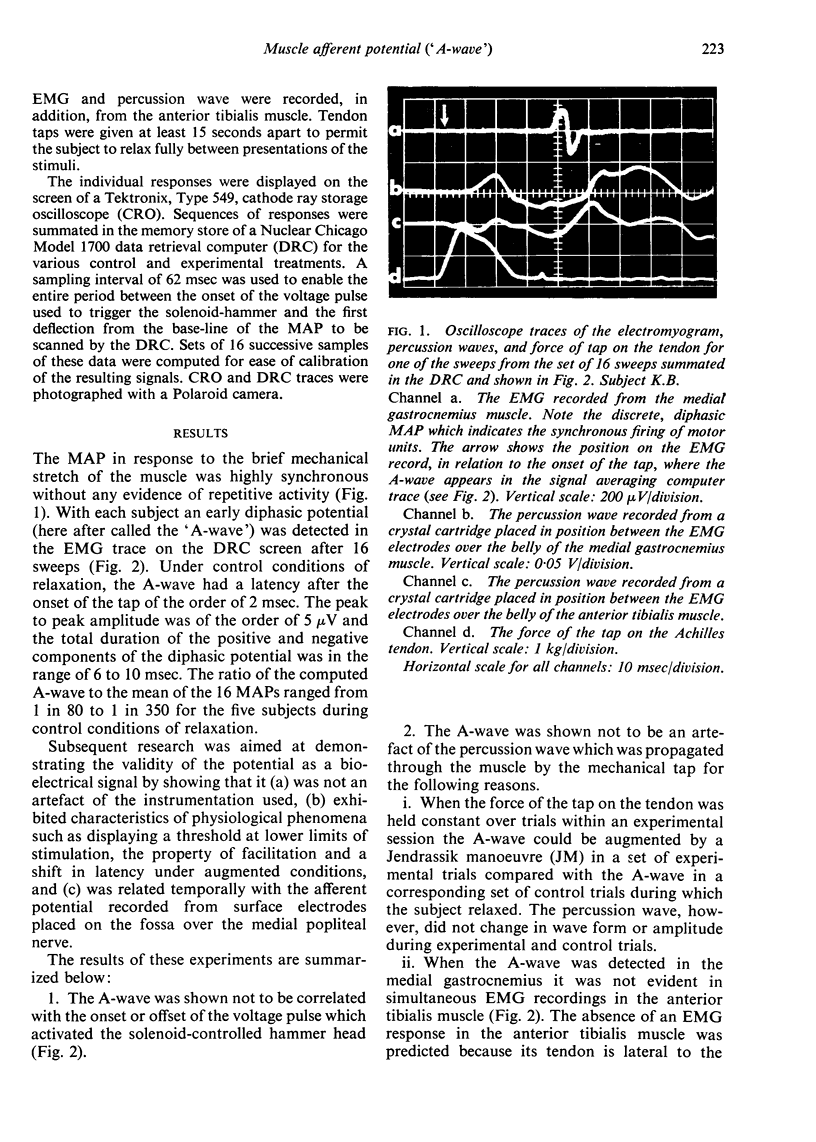

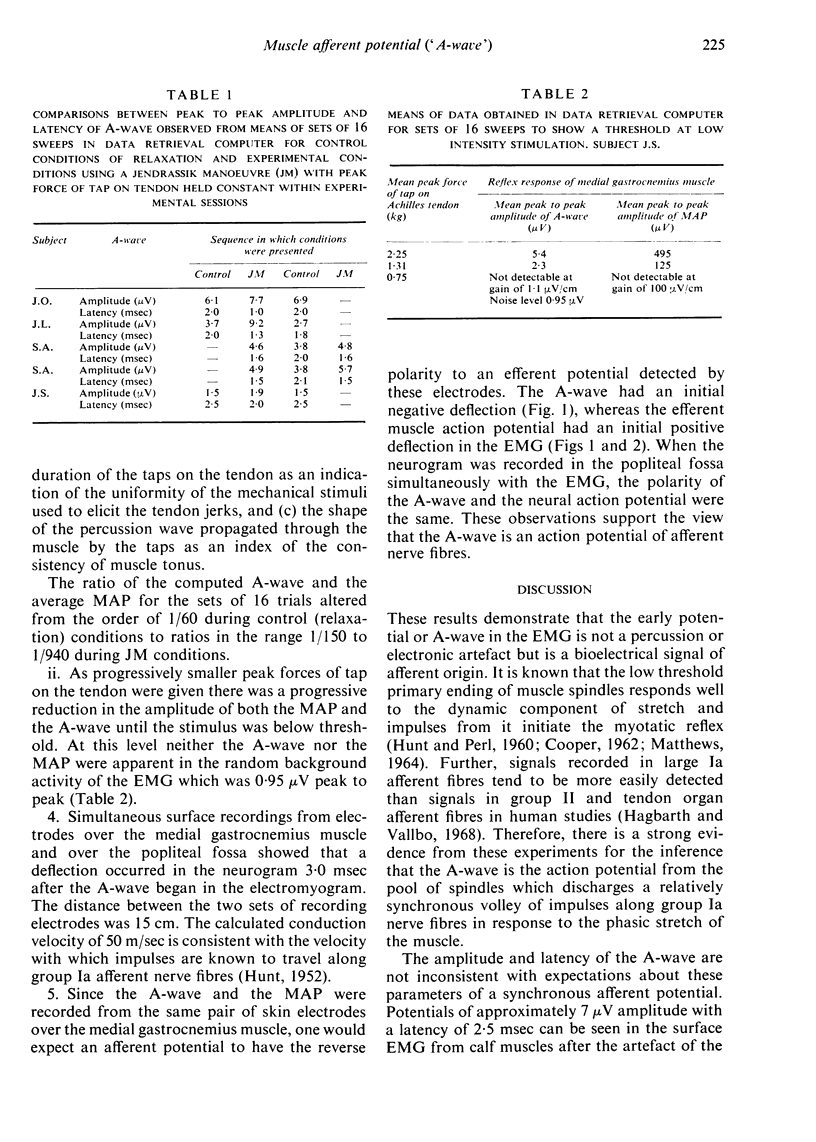

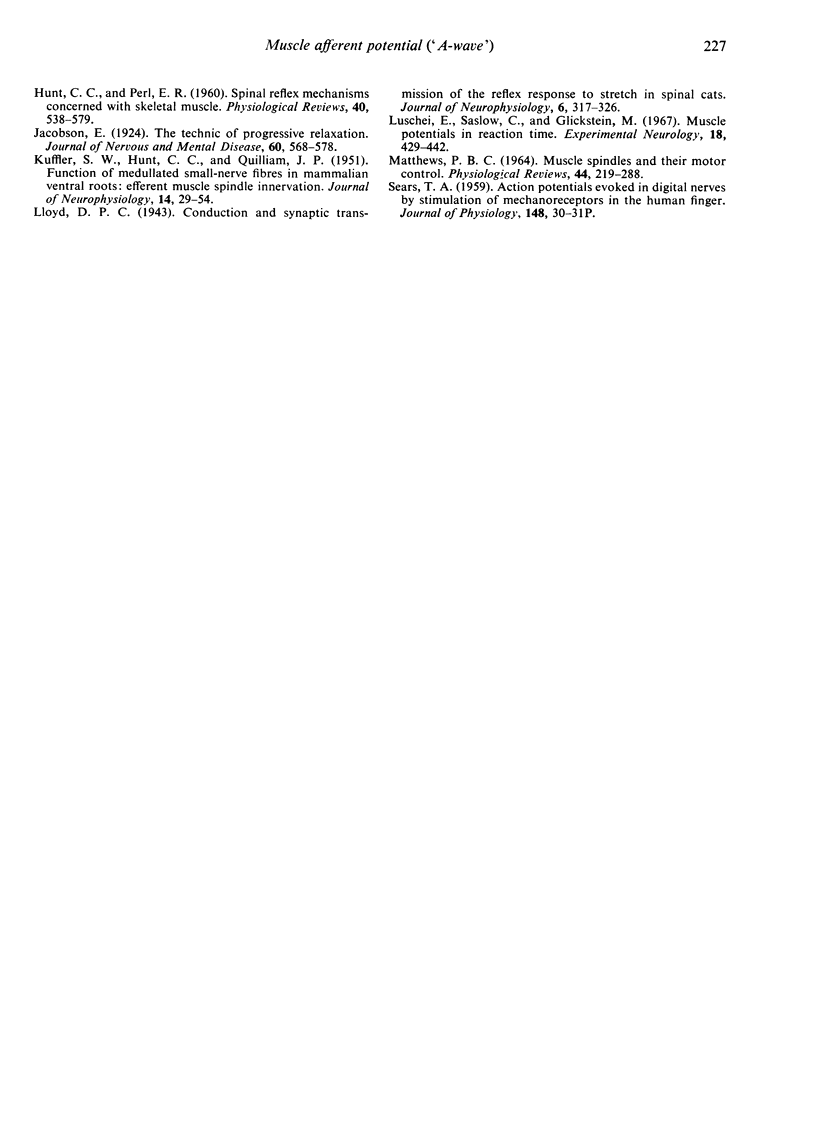
Images in this article
Selected References
These references are in PubMed. This may not be the complete list of references from this article.
- BICKFORD R. G., JACOBSON J. L., CODY D. T. NATURE OF AVERAGE EVOKED POTENTIALS TO SOUND AND OTHER STIMULI IN MAN. Ann N Y Acad Sci. 1964 May 8;112:204–223. doi: 10.1111/j.1749-6632.1964.tb26749.x. [DOI] [PubMed] [Google Scholar]
- Gassel M. M., Diamantopoulos E. Mechanically and electrically elicited monosynaptic reflexes in man. J Appl Physiol. 1966 May;21(3):1053–1058. doi: 10.1152/jappl.1966.21.3.1053. [DOI] [PubMed] [Google Scholar]
- HUNT C. C. Muscle stretch receptors; peripheral mechanisms and reflex function. Cold Spring Harb Symp Quant Biol. 1952;17:113–123. doi: 10.1101/sqb.1952.017.01.012. [DOI] [PubMed] [Google Scholar]
- HUNT C. C., PERL E. R. Spinal reflex mechanisms concerned with skeletal muscle. Physiol Rev. 1960 Jul;40:538–579. doi: 10.1152/physrev.1960.40.3.538. [DOI] [PubMed] [Google Scholar]
- Hagbarth K. E., Vallbo A. B. Discharge characteristics of human muscle afferents during muscle stretch and contraction. Exp Neurol. 1968 Dec;22(4):674–694. doi: 10.1016/0014-4886(68)90156-8. [DOI] [PubMed] [Google Scholar]
- KUFFLER S. W., HUNT C. C., QUILLIAM J. P. Function of medullated small-nerve fibers in mammalian ventral roots; efferent muscle spindle innervation. J Neurophysiol. 1951 Jan;14(1):29–54. doi: 10.1152/jn.1951.14.1.29. [DOI] [PubMed] [Google Scholar]
- Luschei E., Saslow C., Glickstein M. Muscle potentials in reaction time. Exp Neurol. 1967 Aug;18(4):429–442. doi: 10.1016/0014-4886(67)90060-x. [DOI] [PubMed] [Google Scholar]
- MATTHEWS P. B. MUSCLE SPINDLES AND THEIR MOTOR CONTROL. Physiol Rev. 1964 Apr;44:219–288. doi: 10.1152/physrev.1964.44.2.219. [DOI] [PubMed] [Google Scholar]




